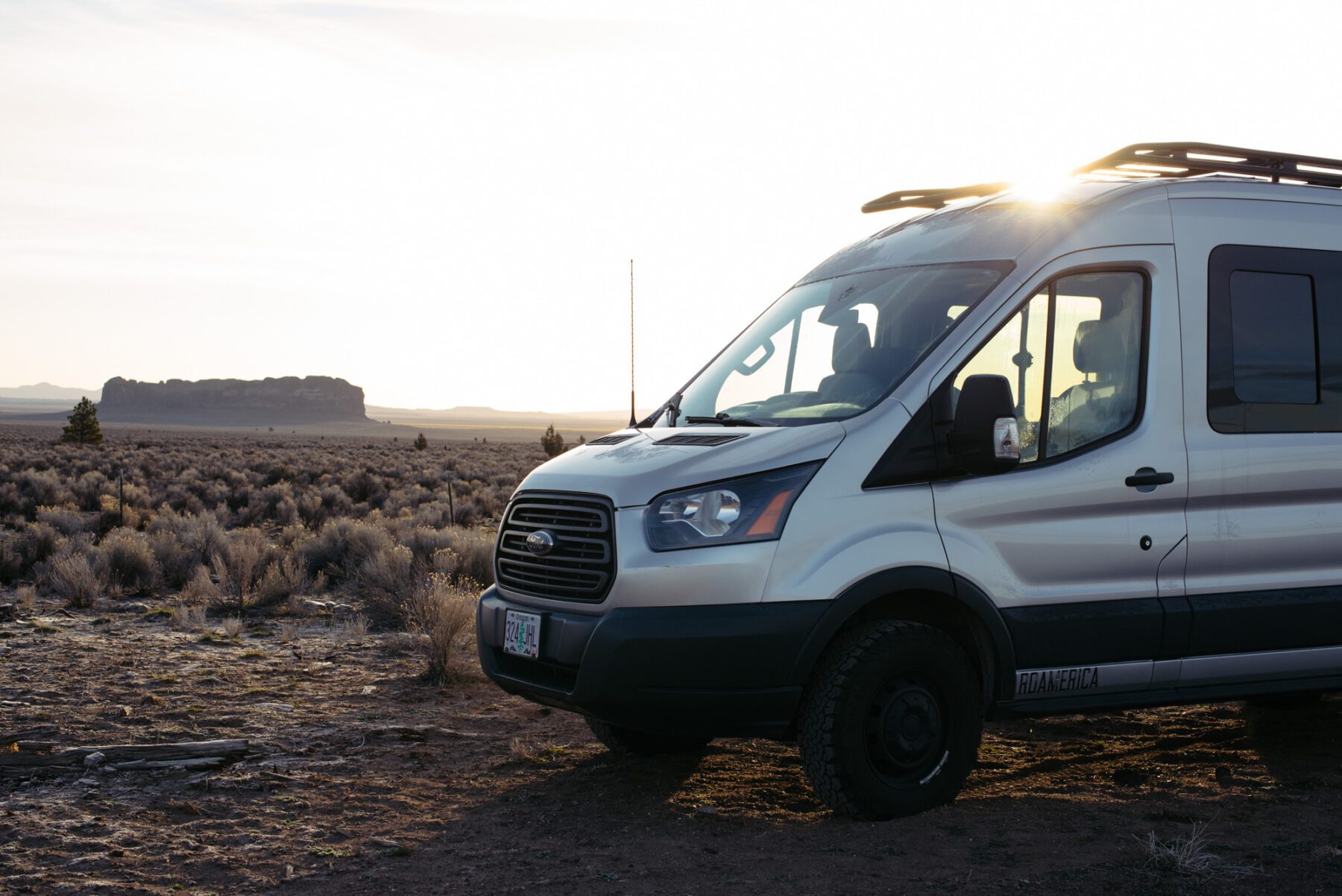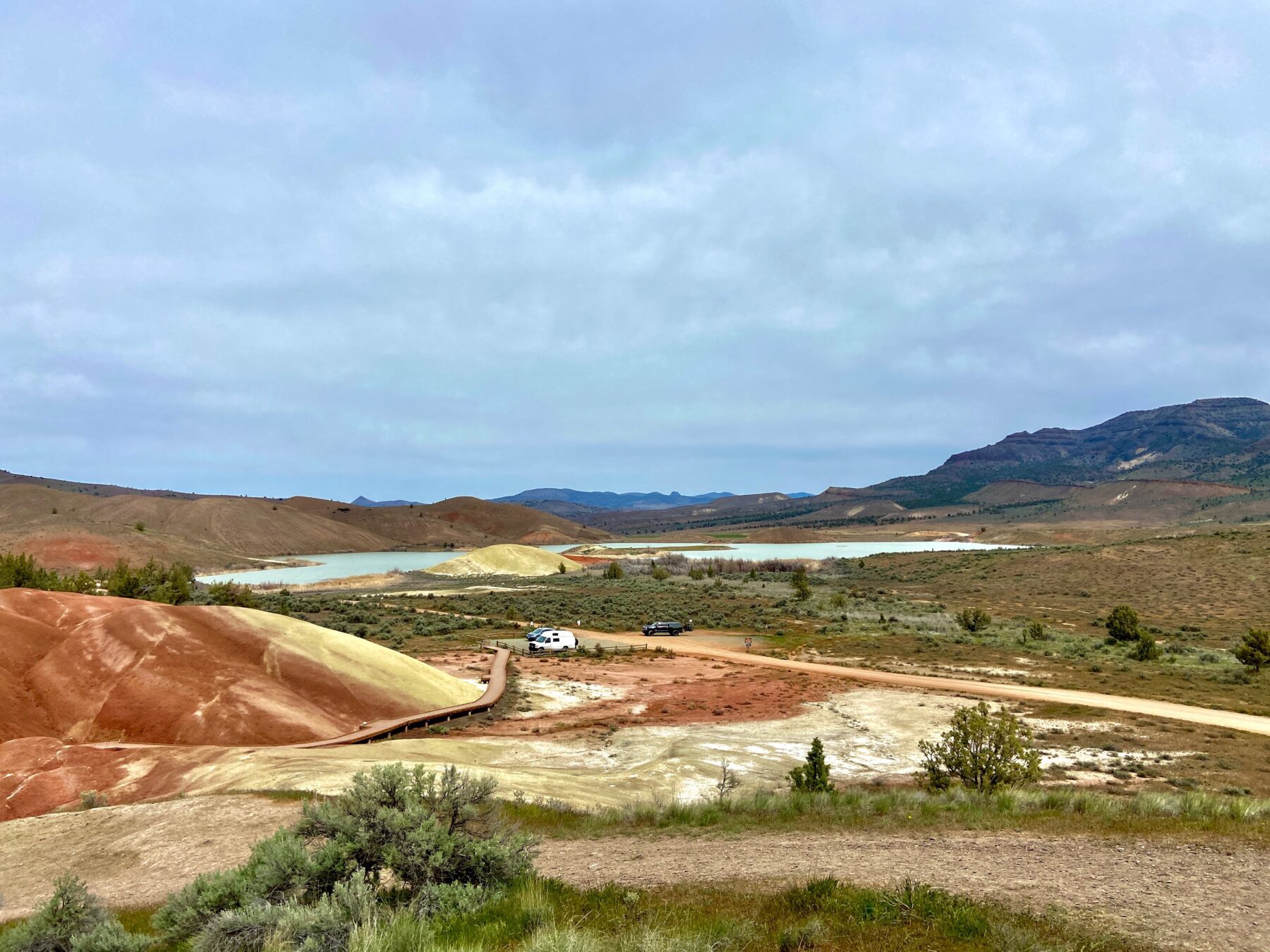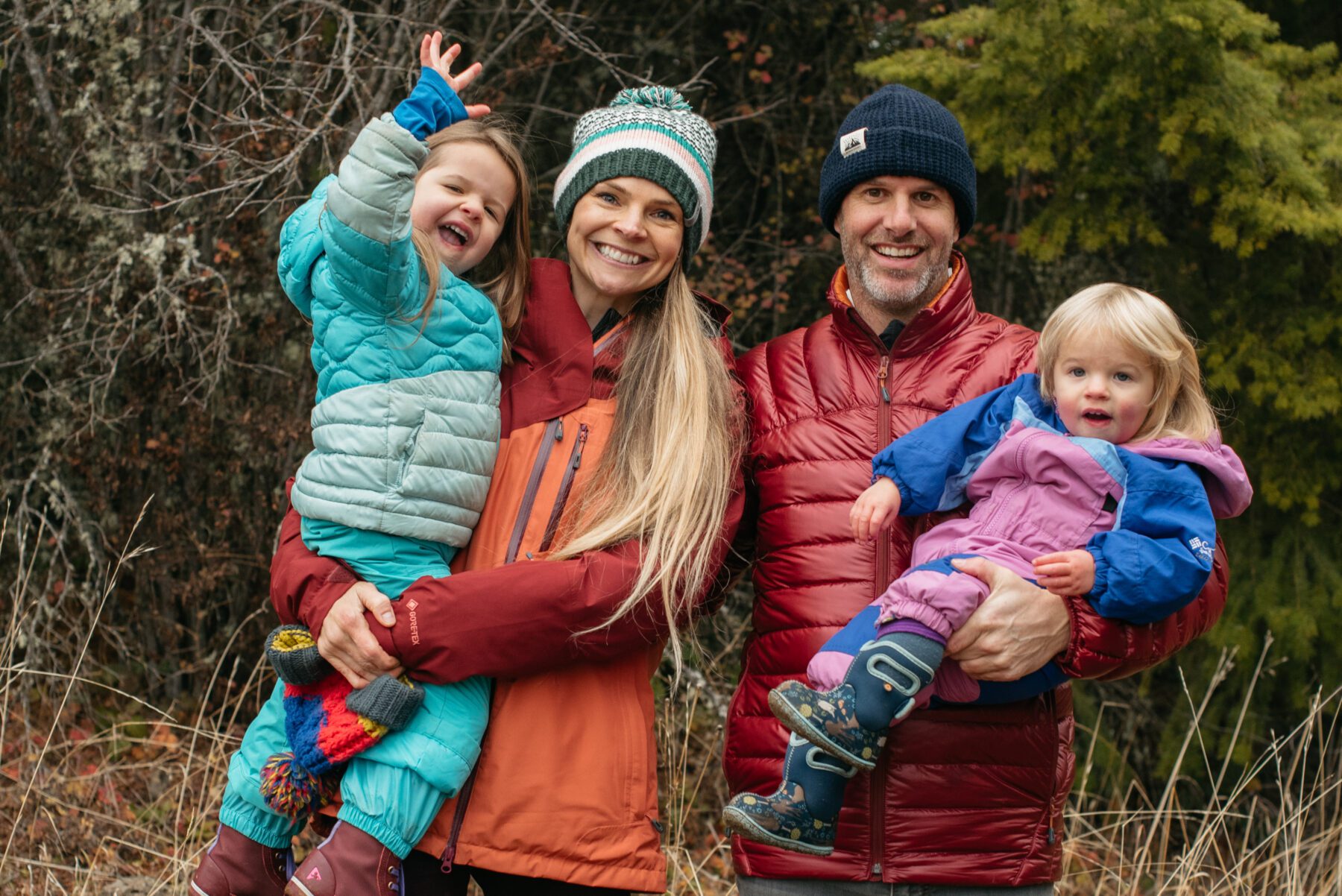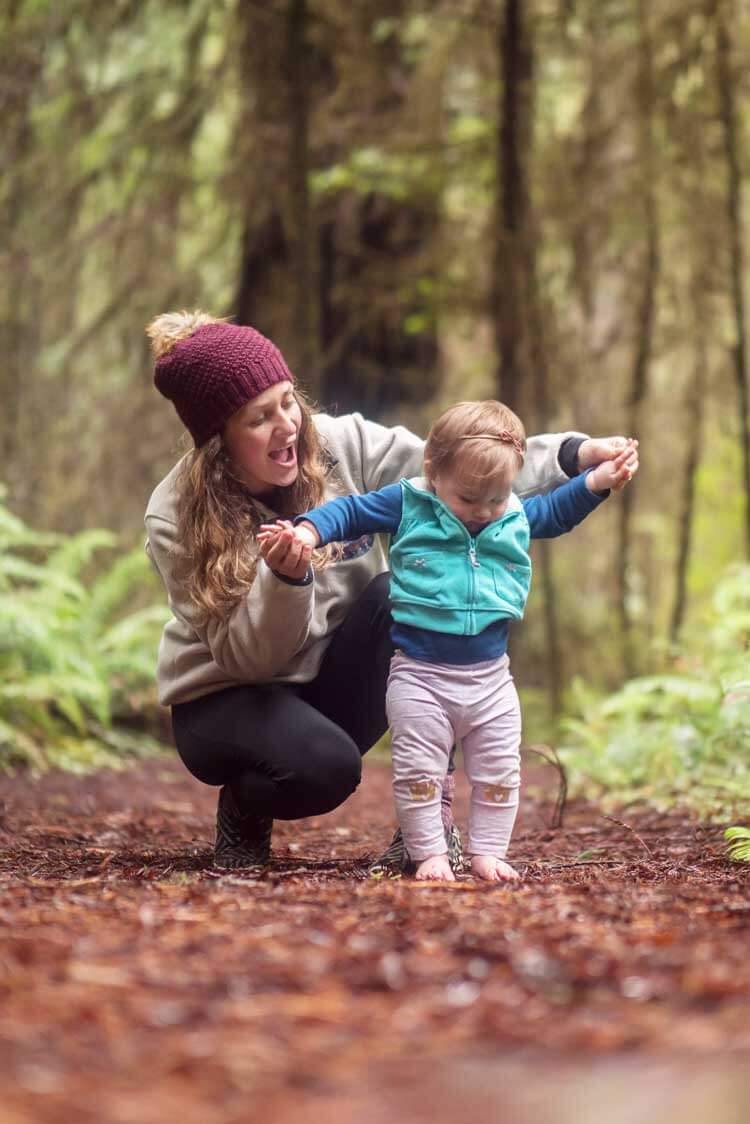
8 Pro Tips for Camping with Kids (Believe me, we’ve been there!)
Many of the joys of camping that we’ve come to love as adults – simplicity, lack of an agenda, whiskey around the campfire – may require some alteration when you consider bringing children along. However, we’ve learned that camping with kids reinvigorates our own love of spending all day and night outside. Here are eight tips to help make everyone – both the grown-ups and the little ones – into happy campers.
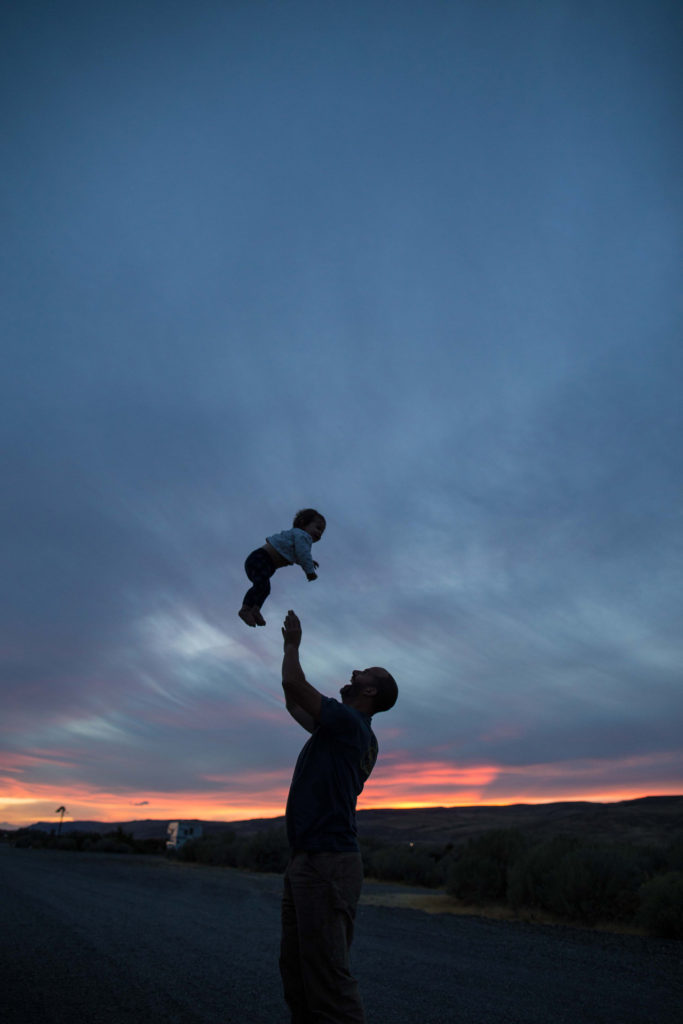
Piper catching some air! A quick pit stop on our drive from Idaho to Oregon.
1. Make a fire – There is perhaps nothing more iconic than a campfire. However, there’s an art to it, and sometimes it can feel like rocket science to try and get it started. If you teach your kids how to master the skill, they’re destined to be the hit of many a camping trip throughout their lives. Send them scurrying into the woods to gather kindling, teach them how to make a fire-starting tinder bundle, and then demonstrate both the log cabin and tipi techniques. The best part? The fire-watching is just as entertaining as the fire-making.
2. Cook at camp– Most kids love to help in the kitchen, so when the kitchen moves outdoors, they’re even more psyched to participate. Almost anything is possible with a well-appointedcamp kitchen and a little bit of planning. For the most memorable meals, introduce them to old favorites like Brown Bears and Hobo Potatoes that can be cooked over the campfire. For on-trail snacks, let them help with chopping and spreading for Ants on a Log and hummus wraps. And s’mores. Don’t forget the s’mores!
3. Practice first aid – Although every family needs a well-stocked first aid kit to accompany their camping supplies, sometimes the camping supplies themselves can serve as props to teach first aid. Kids are born actors; give them scenarios in which they must use certain pieces of gear – sleeping pad, bungee cord, and tent stake – to remedy an injury or illness.
4. Visit public lands – the United States’ public lands are a treasure for all ages, but for kids they’re particularly valuable. From state parks to National Monuments, from BLM wilderness to National Parks, these lands offer incredible opportunities for outdoor recreation and learning about the natural landscape. The National Parks Service Junior Ranger program offers activities in almost all parks, and although it’s recommended for children aged 5 – 13, anyone can participate.
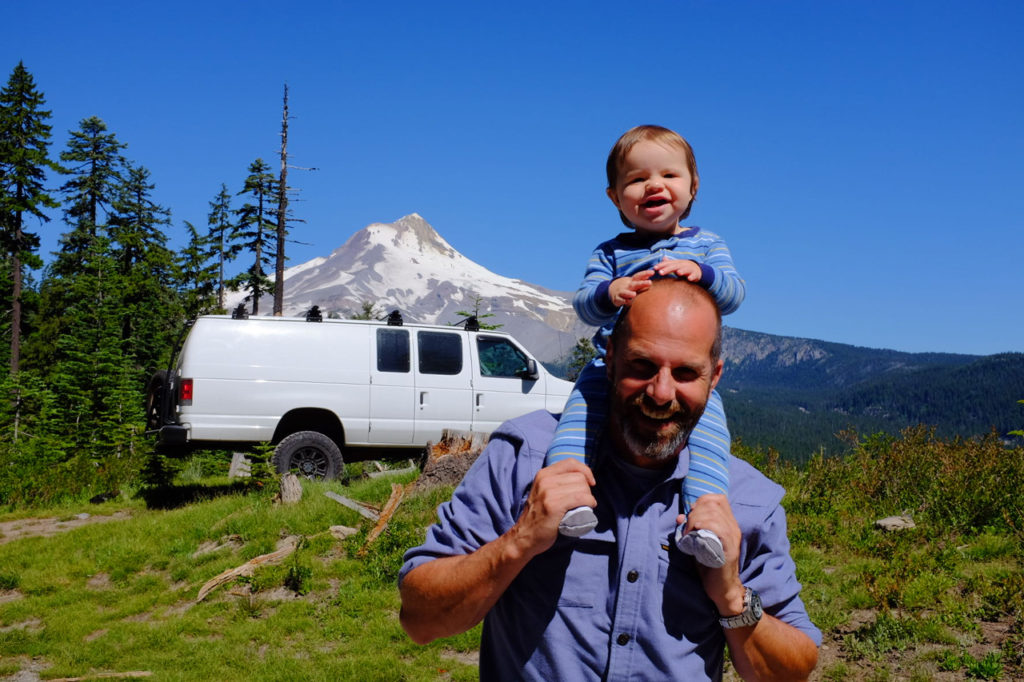
4 hours in to our 3 hour drive:)! We made it in 5 hours. Getting ‘lost’ is half the fun. You come across great places to explore, like this!
5. Look up at the stars – Stargazing is an activity usually prohibited by bedtime, so it can be a special treat on camping trips. Depending on your kids age, you can offer a full-blown astronomy lesson, or just teach them how to identify a few easy-to-spot constellations like the Big and Little Dippers, Orion, and Cassiopeia. Bonus points if you bring a star map so they can study before looking up at the sky.
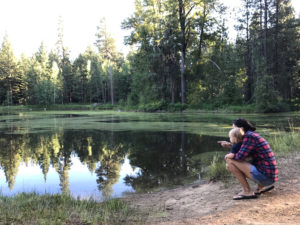
Checking out the frogs at Aspen Lake
6. Go on a nature scavenger hunt – There’s no better way to teach kids how to identify local flora and fauna than making it into a game. Send them scurrying into the woods and meadows to collect Douglas Fir pine cones or rocks painted with lichen. For the wildflowers that you don’t want them to pick, send them with a camera to document their find. When they’ve collected everything on the list, share fun facts about each item; e.g. purple means poison when it comes to wildflowers!
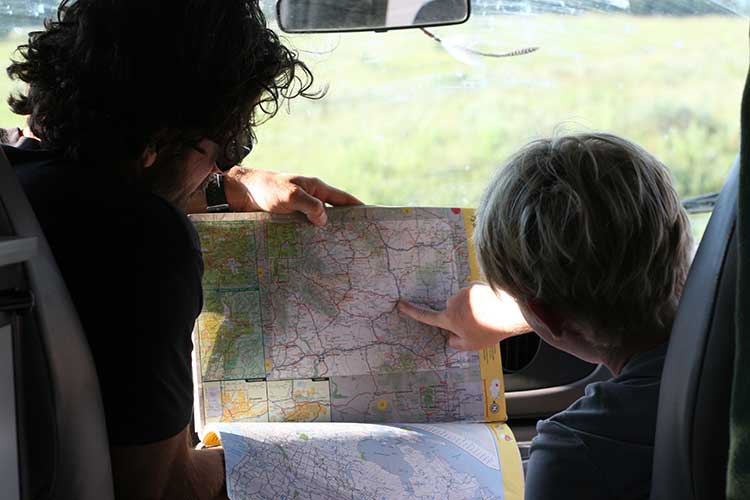
Aaron and Fenn half way through their ROAMERICA adventure, deciding where to go next!
7. Read a map – Despite what Google or Siri might tell you, knowing how to read maps is a very useful skill in the backcountry. A camping trip is a great time to break out the paper ones and teach kids how to use a compass to orient themselves. A good place to start is making your own map, and this is fun and easy to do when you’re staying at a campground or camping primitively near natural features. Be sure to bring paper and crayons so kids can highlight features like trees and creeks.
8. Salute the sun – Starting the day with yoga is a good idea anywhere, but it’s especially fun on a camping trip. Sleeping pads can double as yoga mats, and flat tent sites provide a great space to spread out. Everyone can take turns leading; animal-themed postures like downward dog and cat/cow are favorites with kids. Or, turn it into a direction-following game – “Yogi Says.” There are tons of great kids yoga books out there, and books don’t take up much space in the camping kit.
Although it may seem overwhelming, packing up the family and going camping is well worth every extra sleeping bag or two. Building fires, star-gazing, and running free make for unforgettable experiences, and we all know how much movement and fresh air improve our health and well-being. Plus, who doesn’t need a few more s’mores in their life?
Contact Us to Book Your Family Road TripWords by Betsy Welch

